In Photos: Archaeology Dig Reveals Medusa Statue and Other Treasures
Antiochia ad Cragum, a Roman city founded in the first century, is located on southern Turkey’s rugged coast. Little is known about the city from ancient texts, but over the last several years, archaeologists have unearthed traces of spectacular mosaics, shops and other buildings at the site. [Read About the Medusa Head Discovery]
Amazing teamwork
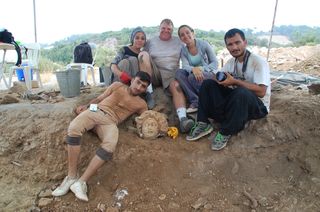
Excavation director Michael Hoff poses with the Turkish students who found a slightly larger than life marble copy of Medusa's head at Antiochia this year. (Credit: Michael Hoff, Hixson-Lied professor of art history, University of Nebraska-Lincoln.)A once-in-a-lifetime find
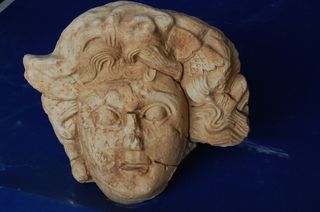
Hoff thinks that during the Christian era many Roman sculptural elements at Antiochia like the Medusa head would have been destined for the kiln; Christians who took over the site smashed artworks considered idolatrous and turned them into mortar. (Credit: Michael Hoff, Hixson-Lied professor of art history, University of Nebraska-Lincoln.)
Digital recreation
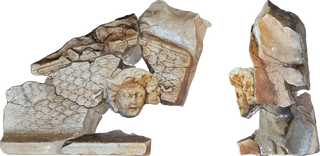
The Medusa head would not have been part of a statue. Instead, it was part of the architecture in one of the city’s buildings, likely a temple. Here, fragments of the Medusa pediment have been pieced together using 3-D photogrammetry techniques (Credit: Philip Sapirstein, assistant professor of art history at the University of Nebraska-Lincoln.)
Piecing together the puzzle
Sign up for the Live Science daily newsletter now
Get the world’s most fascinating discoveries delivered straight to your inbox.
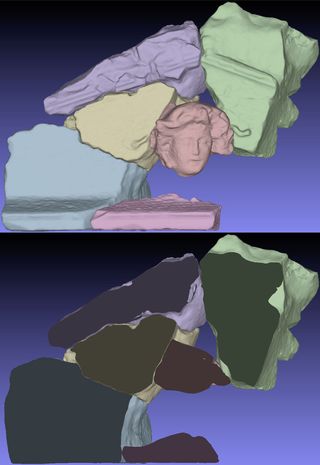
3D models helped the researchers figure out how the Medusa head joined with several other marble fragments to form a pediment. (Credit: Philip Sapirstein, University of Nebraska-Lincoln.)
The treasure trove
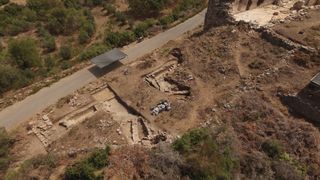
The dig where the statue head was found as seen from above. (Credit: Michael Hoff, Hixson-Lied professor of art history, University of Nebraska-Lincoln.)
An important realization
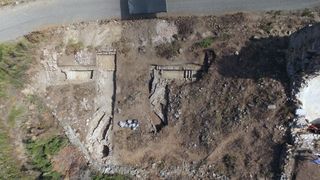
During the 2015 excavations at Antiochia, archaeologists also found the first hints of a bouletarian, or city council house, that may have doubled as a theater or music hall. (Credit: Michael Hoff, Hixson-Lied professor of art history, University of Nebraska-Lincoln.)
A rare find
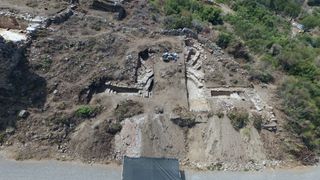
The team hopes to excavate more of the bouletarian next year. But so far their test trenches have revealed a curved marble bench, supports for wooden seats and a marble-paved orchestra. (Credit: Michael Hoff, Hixson-Lied professor of art history, University of Nebraska-Lincoln.)










